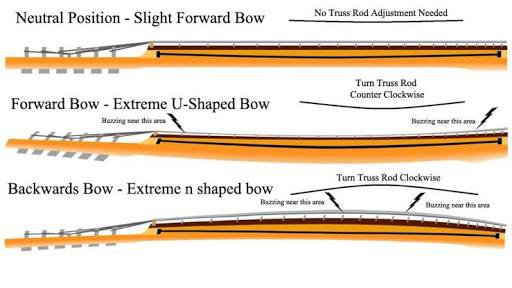Learning guitar notes is a crucial step for beginners embarking on their musical journey. By understanding and memorizing the notes on the guitar fretboard, you gain the ability to play melodies, chords, and eventually create your own music. In this blog post, we will break down the process of learning guitar notes into simple steps that will set you on the path to becoming a confident guitarist.
- Start with the Open Strings: The open strings on a guitar are the unfretted strings when you don’t press any fingers on the frets. Begin by getting familiar with the names of these strings: E, A, D, G, B, and high E. Practice saying the names out loud while plucking each string individually.

- Learn the Natural Notes: The natural notes on the guitar are represented by the letters A, B, C, D, E, F, and G. These notes are the building blocks of music. Starting from the open E string, memorize the sequence of natural notes up to the 12th fret. Repeat the process for each string until you’ve covered the entire fretboard.
- Utilize Mnemonics and Visual Aids: To aid memorization, mnemonics and visual aids can be helpful. For example, you can use phrases like “Eddie Ate Dynamite, Good Bye Eddie” to remember the open string names. Additionally, there are many online resources, diagrams, and mobile apps available that provide visual representations of the guitar fretboard to assist you in memorizing the notes.
- Practice Note Recognition Exercises: To reinforce your knowledge of the guitar notes, incorporate note recognition exercises into your practice routine. Use flashcards or online tools that display random notes on the fretboard, and challenge yourself to identify them quickly. Gradually increase the speed and difficulty of these exercises as your proficiency improves.
- Apply the 5th and 12th Fret Patterns: A useful shortcut for finding notes on the guitar is to recognize the patterns that occur at the 5th and 12th frets. When you know a note’s location on these frets, you can easily find the same note in other positions on the fretboard. Practice identifying and connecting these patterns to expand your note-finding abilities.
- Play Simple Melodies and Chords: Apply your newfound knowledge of guitar notes by playing simple melodies and chords. Start with familiar songs that use only a few notes, such as nursery rhymes or popular tunes. As you progress, challenge yourself with more complex melodies and chords that involve a wider range of notes.
- Engage in Regular Practice: Consistency is key to mastering guitar notes. Set aside regular practice sessions dedicated to note recognition and fretboard navigation. Start with short sessions and gradually increase the duration as you build your skills. Make it enjoyable by experimenting with different genres, styles, and songs that incorporate the notes you’ve learned.
How do I fix an open string fret buzz on an electric guitar
To fix an open string fret buzz on an electric guitar, you can try these simple steps:
Check the Neck Relief: Use a guitar neck relief gauge or straight edge to ensure that there is a slight curvature or “relief” in the neck. If the neck is too straight or bowed, it can cause buzzing. Adjust the truss rod (located inside the neck) to achieve the proper amount of relief.
Adjust the Action: The action refers to the height of the strings above the fretboard. If the action is too low, the strings can vibrate against the frets and cause buzzing. Use the bridge or saddle adjustment screws to raise the action slightly until the buzzing stops.
Check the Nut: The nut is the small piece at the top of the neck that holds the strings in place. Make sure the nut slots are properly sized and lubricated. If the slots are too low or too tight, it can cause buzzing. Consider having a professional luthier or guitar technician inspect and adjust the nut if necessary.
Check for Uneven Frets: Inspect the frets for any signs of wear, damage, or unevenness. Use a straight edge or fret rocker tool to identify any high or uneven frets that may be causing the buzzing. If you find any, it’s best to consult a professional for fret leveling or dressing to ensure a proper fix.
Check for Loose Hardware: Sometimes, loose hardware like tuning machine screws or bridge saddles can cause buzzing. Carefully examine and tighten any loose components to eliminate potential buzzing sources.
Remember, if you’re unsure or uncomfortable performing these adjustments yourself, it’s always recommended to seek assistance from a qualified guitar technician or luthier. They have the expertise and tools needed to diagnose and resolve the buzzing issue effectively while ensuring the overall setup of your guitar is optimized for playability.
4 thoughts on “Learn Guitar notes for beginners”